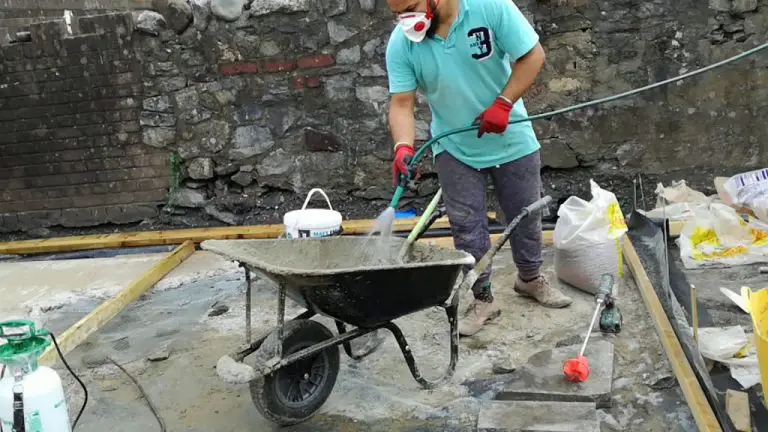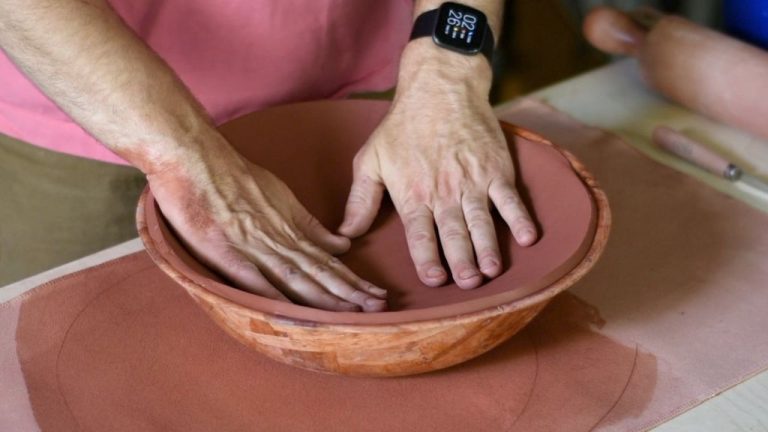Does Silicone Stick To Clay?
Clay and silicone are common materials used in arts, crafts, and DIY projects. Clay is an earthen material made from minerals and organic materials like kaolin or bentonite. It can be natural or synthetic and has many uses including pottery, sculpture, and modeling. Silicone is a synthetic polymer made from silicon, oxygen, carbon, and hydrogen. It has properties like high temperature resistance, chemical stability, and flexibility. Silicone can be used to make molds, adhesives, sealants, and more.
Properties of Clay
Clay is a fine-grained natural material composed primarily of hydrated aluminum silicates and other minerals. The composition and texture of clay can vary widely depending on factors like its mineral content and the amount of organic matter present.
In general, clay has a very fine, smooth texture from the small size of its particles. It is made up of particularly tiny mineral fragments less than 2 micrometers in size, giving it a plasticity that allows it to be molded and shaped. Pure clay is white or gray in color, but natural clays pick up impurities that give them various earthy hues of red, brown, green, or yellow.
The most common clays include kaolinite, montmorillonite-smectite, illite, and chlorite. The specific mineral composition affects properties like plasticity. Kaolinite clay has a low plasticity while montmorillonite clay is highly plastic and expansive. The amount of organic matter also influences clay’s texture and workability. More organic matter makes clay more elastic.
Properties of Silicone
Silicone has a unique chemical composition that gives it a wide range of useful properties. It is made up of silicon, oxygen, carbon, and hydrogen. The backbone of silicone is composed of alternating silicon and oxygen atoms, with side chains containing methyl or other hydrocarbon groups attached to the silicon atoms.
This molecular structure gives silicone its soft, flexible, rubber-like texture. The polymer chains in silicone can slide past each other easily, allowing the material to bend and compress. Silicone can come in a range of consistencies from liquid to gel to rubber. The texture can be tuned by varying the length of the polymer chains and the amount of cross-linking between the chains.
Silicone’s flexible, slippery texture makes it great for sealing, adhesive, coating, and insulating applications. Its resistance to heat, low chemical reactivity, and water repelling properties also add to its versatility. When cured, silicone provides a durable yet flexible material.
Adhesion Principles
Adhesion refers to the tendency of different materials to “stick” to each other upon contact. It involves chemical and physical interactions at the interface between the materials.
For one material to adhere to another, they must make intimate molecular contact. The materials need to “wet” each other well so that chemical bonds can form between them. However, wetting alone is not sufficient. Mechanical adhesion can also occur if one material penetrates into pores or roughness of the other material to mechanically interlock.
The strength and durability of adhesion depends on the specific chemical composition and structure of the materials involved. Their surface energies need to be similar. The adhesive molecular interactions could involve van der Waals forces, hydrogen bonding, ionic, covalent, or metallic bond formation.
Environmental factors are also important. Heat, moisture, oxidation, and contaminants can impact the adhesion interface over time. The strength of adhesion can be measured using tests such as lap shear, peel, cleavage, and others depending on the materials and application.
Testing Silicone Adhesion
There are a few simple experiments that can test how well silicone adheres to clay:
-
Apply a small amount of silicone to a clay surface and allow it to cure completely. Then try peeling or scraping the silicone off. If it comes off cleanly, adhesion is poor. If it remains stuck tightly, adhesion is good.
-
Make clay samples of different smoothness – very smooth, slightly sandy/gritty, heavily sandy/gritty. Apply silicone to each and test how well it adheres after curing. This checks if surface roughness affects bonding.
-
Make clay bars of different thicknesses – thin, medium, thick. Apply silicone to each and test adhesion. Thicker clay bars provide more strength to resist the silicone being pulled off.
-
Make angled or vertical clay surfaces, apply silicone, and see if it will remain stuck without sliding down over time as it cures. The steeper the angle a silicone bead can cling to, the better it adheres.
-
Apply thickened silicone caulk, regular caulk, and thin silicone sealant to test if viscosity differences affect adhesion and bonding.
These simple experiments shed light on how well silicone can adhere to clay under various conditions, and what factors impact the strength and durability of the bond.
Factors Affecting Adhesion
Several factors can affect how well silicone will adhere to clay surfaces. These include:
-
Surface Porosity – More porous clay surfaces provide more area for silicone to grip and bind to. Dense, non-porous clays are more difficult for silicone to adhere to.
-
Surface Preparation – For best adhesion, clay surfaces should be clean and free of dirt, oil, or other contaminants. Lightly sanding or scoring the surface creates a rougher texture for silicone to bind to.
-
Curing Conditions – Silicone cures through a chemical reaction requiring moisture. Dry, arid environments can inhibit proper curing and adhesion.
-
Clay Composition – Some clay types, like polymer clays, are inherently non-porous and smooth. Natural clays are more porous. Composition affects adhesion.
-
Silicone Type – Some silicone formulations and chemistry bond better to certain materials. Using a silicone designed for adhesion can improve bonding.
Optimizing these factors creates the best conditions for silicone to mechanically and chemically adhere to clay. Proper surface prep and matching silicone type to clay properties has the largest impact.
Improving Adhesion Between Silicone and Clay
If you are running into issues getting silicone to properly adhere to polymer clay, there are some tips and tricks you can try to improve bonding:
1. Clean and roughen the clay surface before applying silicone. Use fine sandpaper or a sharp tool to gently scratch the surface. This gives the silicone something to grip onto.
2. Apply a primer like epoxy resin to the clay first. Primers create a tacky surface and chemical bonding sites for silicone.
3. Mix a bit of clay softener into the surface before adding silicone. The softener temporarily melts the clay allowing the silicone to penetrate deeper.
4. Let silicone fully cure before stressing the bond. Silicone may take 24-48 hours to fully harden and gain adhesion strength.
5. Use a thin layer of cyanoacrylate adhesive in addition to silicone for a very strong bond.
6. Bake cured clay parts after applying silicone to maximize bonding strength through heat activation.
7. Opt for a platinum-cure silicone if using with sulfur-free clay. It has better compatibility than tin-cure silicones.
8. Add a filler like fumed silica to silicone to thicken it and make it less likely to pull away while curing.
With a bit of preparation and the right application techniques, silicone can strongly and reliably bond to polymer clay for many projects.
Adhesive Alternatives
If silicone does not provide sufficient adhesion to clay for your project, there are several other types of adhesives that can be effective:
Super glue: Cyanoacrylate adhesives, commonly known as super glues, provide very strong bonding and dry quickly. Super glue is useful for securing small clay pieces or attachments.
Epoxy: Epoxy adhesives are two-part adhesives that create a permanent, rigid bond as they cure. Epoxies are helpful when you need to join large clay surfaces or attach heavy clay pieces.
Hot glue: Thermoplastic hot glue guns provide a fast-drying adhesive. Hot glue is good for quickly adhering lightweight clay decorations or parts.
White craft glue: PVA-based white craft glues, like Elmer’s Glue, are versatile for bonding clay. Allow extended drying time. Useful for collage work or affixing paper.
Spray adhesives: Aerosol spray adhesives provide an even adhesive coating for lamination or joining flat clay surfaces. Let spray adhesives fully cure.
Test any new adhesive on a clay sample first. Consider the project goals, clay type, drying time, and strength needed when selecting an appropriate alternative glue.
Proper Application
When applying silicone to clay surfaces, follow these steps for best results:
- Thoroughly clean and dry the clay surface. Remove any dust, oils or contaminants that could interfere with adhesion.
- Consider lightly sanding the clay first to create some texture for the silicone to grip onto.
- Apply a primer like epoxy or acrylic paint before the silicone for enhanced bonding.
- Choose a platinum-cure silicone if possible, as it bonds better than tin-cure silicone.
- Apply the silicone evenly in a thin layer following the product instructions.
- Allow proper drying/curing time based on silicone type before stressing the bond.
- For load-bearing bonds, consider reinforcing with fiber mesh or mechanical fasteners.
- When smoothing silicone, wet your tool instead of using solvents that could weaken adhesion.
- Avoid overworking the silicone or contaminating the uncured surface.
- Test a small area first if concerned about adhesion issues.
Paying attention to proper application techniques will help maximize silicone’s bonding to clay surfaces for your project needs.
Conclusion
While silicone and clay are non-porous compounds with low surface energy, weak adhesive forces are possible. Results vary based on multiple variables including silicone type, clay type, surface texture, application method, curing conditions, and more.
In summary, silicone generally does not strongly adhere to clay. However, with proper surface preparation, adhesive use, and application techniques, some silicone types can temporarily or lightly bond to some clay surfaces. The adhesion is often not permanent or waterproof though.
To directly answer the original question – does silicone stick to clay? The answer is yes, silicone can stick to clay under certain conditions, but the adhesion is typically weak. Using adhesives or mechanical attachments is recommended for more robust bonds.





